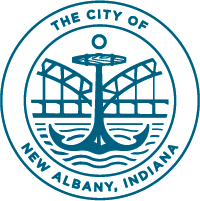EPA Gives Go Ahead to New Albany For Achieving Clean Water Act Compliance
/Sewer Improvements Recognized by IDEM and EPA, Consent Decree Lifted
The Indiana Department of Environmental Management (IDEM) notified the City of New Albany that the “Sewer Ban” imposed on the City in 1991 is terminated. Additionally, based on the success of millions of dollars’ worth of sewer and environmental improvements, a federal judge dismissed the consent decree that the City of New Albany was under from the Environmental Protection Agency (EPA).
“We made great strides in making the environment in the Ohio River Valley much healthier by investing in our Wastewater Treatment Facility and by removing waste from our local water stream,” stated Mayor Jeff Gahan. “I want to thank the residents of New Albany for being patient, but now, our Wastewater Treatment Facility is a publicly owned and operated facility that every resident in New Albany can be proud of. Our work is not over, but we have hit a huge environmental, economic, and health milestone for the City of New Albany. Many of our peer cities are just now beginning to feel the pressure from residents and the EPA who now demand cleaner water and improved sewers.”
History of the Sewer Ban, IDEM, and EPA actions
On September 12, 1991, the Indiana Department of Environmental Management imposed a “Sewer Ban” on the City of New Albany. When a sewer ban is in place, new sewer lines cannot be connected to the Wastewater Treatment Plant – this essentially halts new development of homes, businesses, and more. Restrictions like this can have a wide range of impacts on a city, from economic, to development, financial, and even environmental.
A short time later, New Albany was placed under an Environmental Protection Agency decree in 1992 due to sanitary sewer overflows, or SSOs, which are a violation of the federal Clean Water Act.
How SSOs affected our local Health and Environment
Bans will typically be in place when a wastewater treatment plant collects more waste than it can process efficiently. Because the sewer system had exceeded its limits, the city had 186 areas that overflowed. This means that wastewater, the untreated water you flush down the toilet, was bubbling up through grates and manholes and was spilling into New Albany’s streets.
Prior to the massive improvements over the last 10 years, those 186 sites would discharge over 15,000,000 gallons of sewage into yards, streams, and rivers during large rain events.
The average size of a typical family, residential swimming pool is approximately 8640 gallons. That meant that every time New Albany experienced a large storm event, the system was discharging nearly 1736 family sized pools worth of sewage into our local waterways.
This was completely unacceptable to Mayor Gahan and his administration, and work began immediately to correct this egregious environmental assault.
Massive underground storage tanks are installed off Silver Street to increase sewer capacity.
10 Years of Action to Improve our Health, Environment, and Recreation Opportunities
Over $40 million has been invested in wastewater and stormwater improvements in the last 10 years towards projects aimed at eliminating Sanitary Sewer Overflows. One of the larger projects was located behind St. Mary’s Cemetery, and included installing massive underground pipes to increase capacity for the wastewater system. Projects like this helped to increase capacity, reduce sanitary sewer overflows, and protect the local water stream from environmental hazards that SSOs can cause.
Over numerous months, IDEM evaluated the City of New Albany and found ZERO SSOs. Considering that the City experienced nearly 186 SSOs in previous years, this proved that the investments paid off. In a letter from IDEM to the City of New Albany, Jason House, Chief of the Compliance and Enforcement Branch of the Office of Water Quality, stated that “Because actions taken to correct the hydraulic overlord condition, which caused the excessive SSOS, have been successful, the Department of Environmental Management is now terminating the Sewer Ban…”
Our waterways, streams, and rivers are now cleaner and healthier, opening up new recreation opportunities for swimmers, fisherman, boaters, and more. Multiple parks projects are underway to take advantage of these new opportunities, including the New Albany Shoreline Project and Clark County’s Origin Park.
Two fisherman cast away by the Dam in Silver Creek near Providence Way.
“I want to thank our Wastewater Utility Board, our plant operator and management team for their continued work and oversight to help us achieve this goal,” stated Mayor Jeff Gahan. “I also want to thank the city council for their support, along with our legal team who have been instrumental in helping us get this accomplished. And finally, I want to thank the local businesses, many of whom helped and were respectful of the wastewater collection plant and the rules that we have to abide by to help protect our local waterways. Because of all of these groups working together, our city is now more attractive, environmentally friendly, visibly cleaner, and a healthier place to live.”






